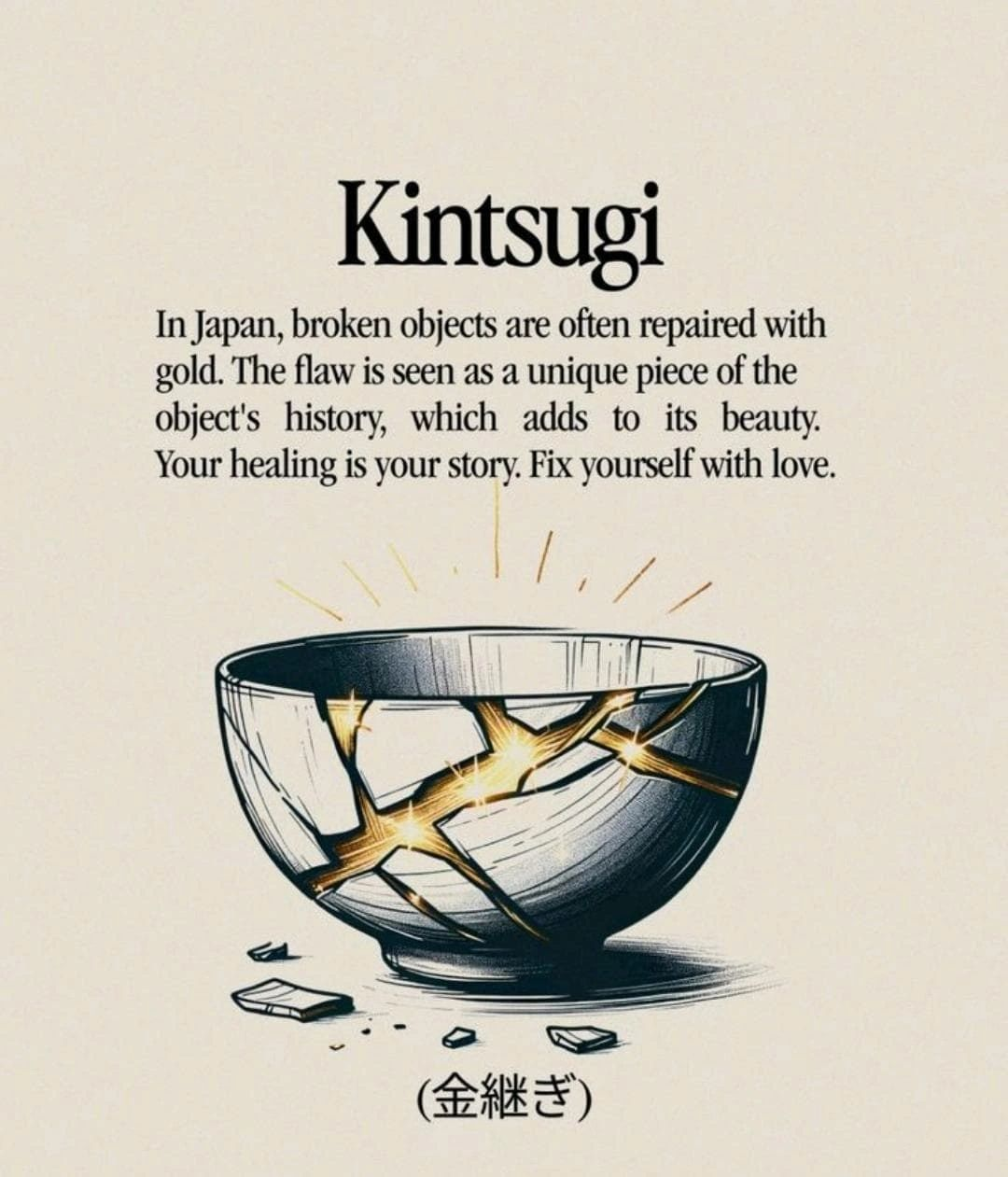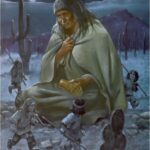History and Philosophy of Kintsugi
- Kintsugi is a centuries-old Japanese art that originated as a method to repair broken pottery with gold, evolving into an art form demonstrating beauty in imperfection.
- The art is deeply rooted in the philosophy of Wabi-Sabi, which emphasizes the beauty of imperfection and transience, valuing the history and life of objects.
- Wabi-Sabi regards imperfections as highlighting nature and artisanship more than a perfectly flawless object does.
Process and Technique
- In Kintsugi, broken pottery is repaired using a lacquer mixed with powdered gold, silver, or platinum, with the resulting lines becoming prominent features of the repaired piece.
- An alternative technique involves replacing missing pottery sections with gold or incorporating pieces from different ceramics.
- The technique highlights the repaired object’s imperfections, offering both aesthetic and functional value, making each piece unique.
Symbolism and Metaphors
-
Kintsugi symbolizes resilience and the beauty of imperfection, turning repaired scars into strengths.
Kintsugi, as a cultural and philosophical practice, offers profound insights into resilience and the remarkable beauty found in imperfection. Originating in Japan, this art transforms brokenness into a source of strength by repairing pottery with golden seams, symbolizing that scars are not merely signs of damage but of survival, growth, and transformation. The process metaphorically emphasizes that imperfections—whether in objects, people, or experiences—do not diminish value but, rather, enrich it. The golden seams become visual markers of life’s trials, showing how challenges and flaws are integral to creating something unique and enduring.
This symbolism aligns deeply with Japanese philosophies such as Wabi-Sabi, which celebrate transience and intrinsic beauty in the incomplete or imperfect. By highlighting the cracks as embellishments rather than hiding them, Kintsugi reframes the narrative of damage, suggesting that every fracture or scar carries an empowering story. In a broader cultural context, the practice champions self-acceptance and personal growth, encouraging individuals to see their figurative scars as testaments to resilience and as opportunities for reinvention. This approach teaches us that perfection is less about flawlessness and more about embracing our vulnerabilities with grace and strength.
- The golden seams represent the scars accumulated through life experiences, suggesting that our brokenness can be a source of beauty and strength.
- Embracing flaws rather than concealing them aligns with a broader life lesson of self-acceptance and growth.
Cultural and Practical Implications
- Kintsugi’s integration into Japanese culture illustrates the influence of Wabi-Sabi and the importance of recognizing beauty in ordinary objects and life.
- The repaired pottery, while functional, is often treated as art, demonstrating the balance between utility and aesthetic value.
- Kintsugi highlights the transient and ever-changing nature of life, encouraging an appreciation for the journey of transformation.
Life Lessons and Personal Reflections
- Kintsugi teaches us to embrace imperfections in ourselves, using flaws as integral parts of our identity and life story.
- It promotes resilience and growth, viewing past mistakes and struggles as opportunities for personal transformation.
- Kintsugi offers insights into relationships and forgiveness, emphasizing mending broken ties as a valuable and enriching process.
♠
Found a bug? Have some other thoughts on this tool? Let me know here →






